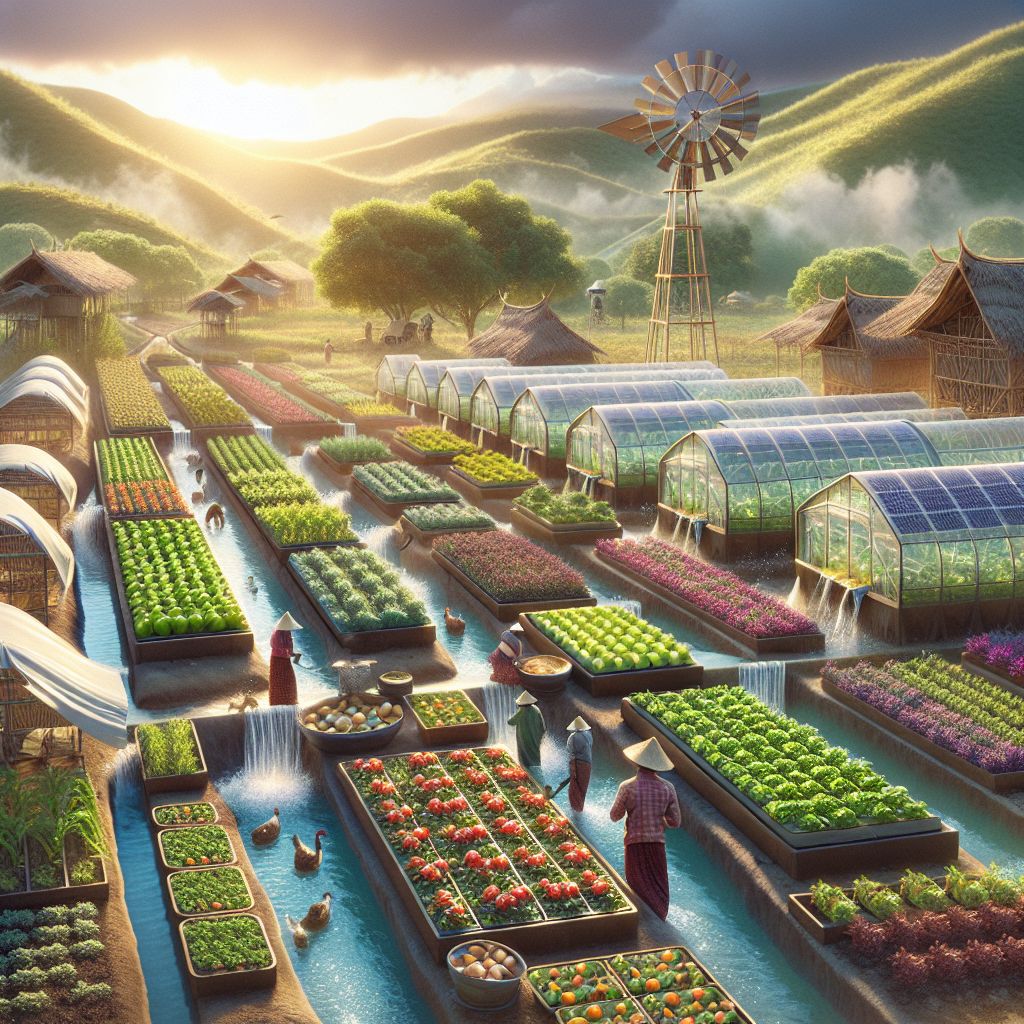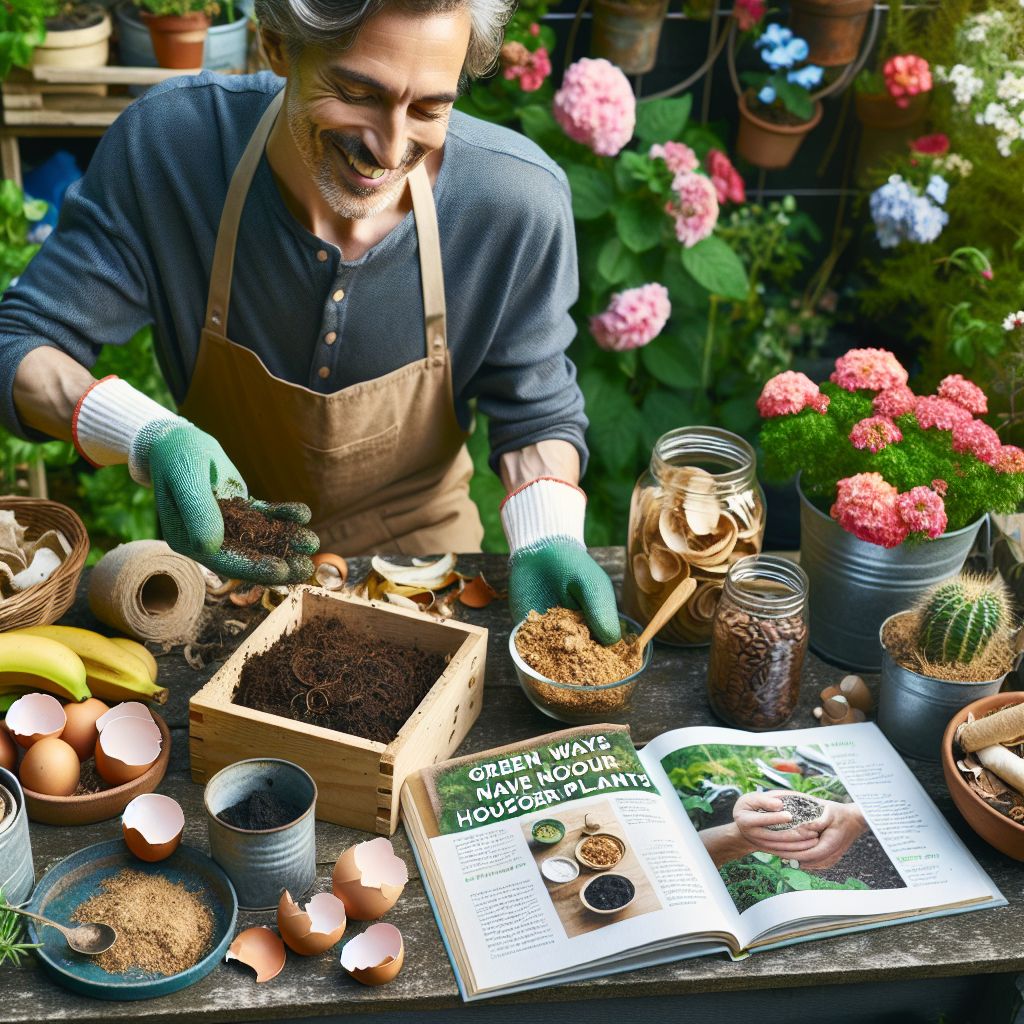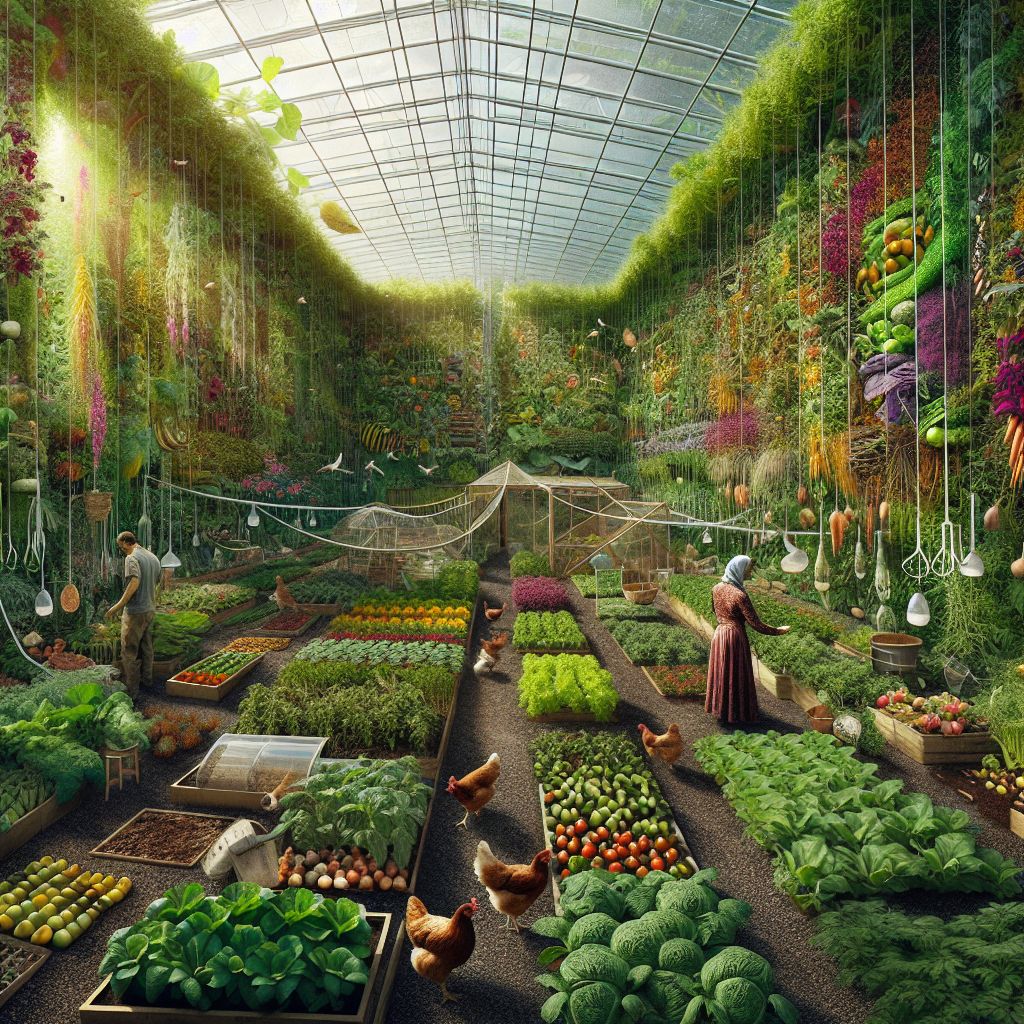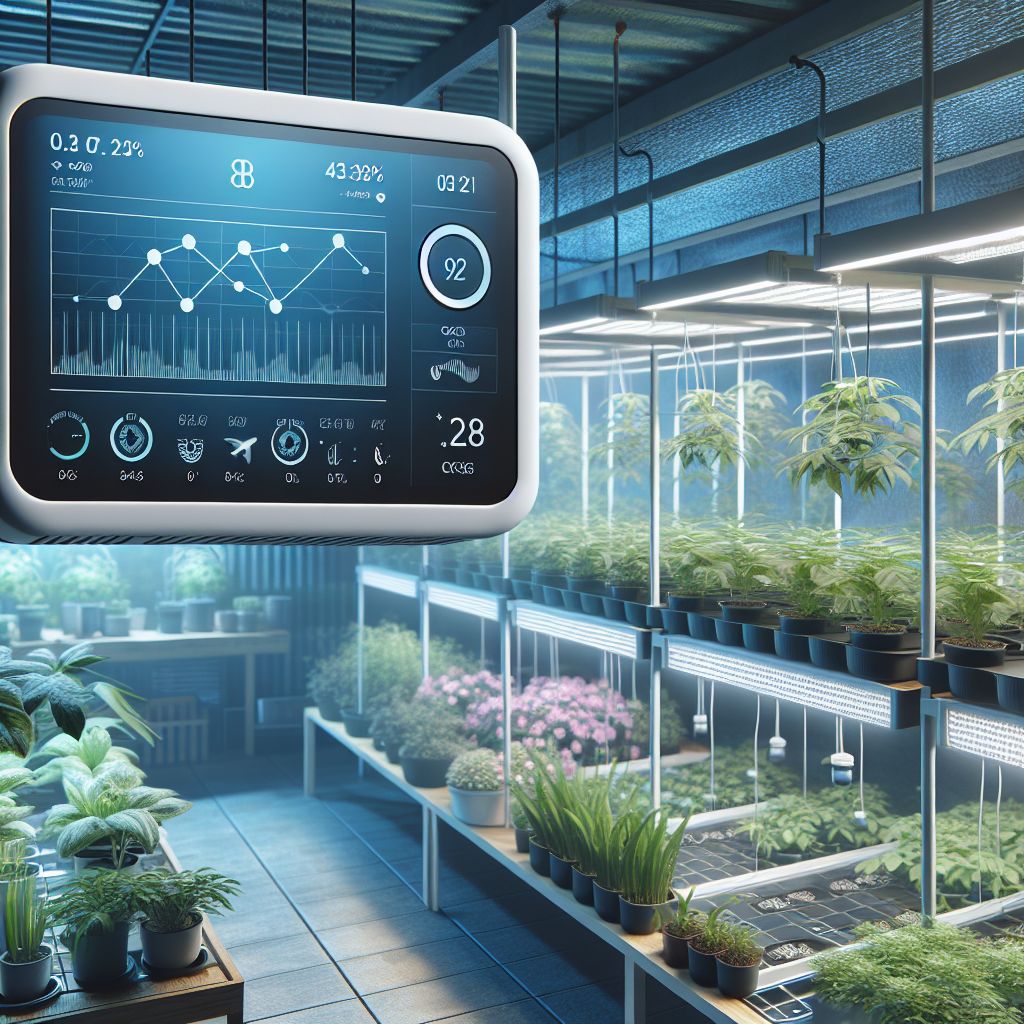Article-at-a-Glance
-
Understanding the types of fertilizers is crucial for plant health and optimal greenhouse yield.
-
Organic fertilizers release nutrients slowly and are beneficial for soil health.
-
Synthetic fertilizers provide immediate nutrient availability to plants.
-
The NPK ratio on fertilizer labels is key to selecting the right type for different plant growth stages.
-
Choosing the correct growing media and adjusting pH levels are also essential for healthy plant growth.
Maximizing Greenhouse Plant Growth
Let’s talk about turning your greenhouse into a plant paradise. Whether you’re nurturing delicate seedlings or tending to robust veggies, the secret to lush, vibrant growth often lies in the soil and what you add to it. And that’s where fertilizer comes into play. Think of it as the multivitamin that gives your plants that extra boost to grow stronger, faster, and healthier.
The Right Fertilizer: A Game-Changer for Plants
Choosing the best fertilizer for your plants isn’t just about grabbing the first bag you see at the garden center. It’s about understanding what your plants need at different stages of their life. Just like us, plants need a balanced diet, and the right fertilizer can be the difference between a plant that survives and one that thrives.
-
Consider the plant type: Leafy greens love nitrogen, while flowering plants crave phosphorus.
-
Check the NPK ratio: It tells you the proportion of nitrogen (N), phosphorus (P), and potassium (K) in the fertilizer.
-
Be mindful of application rates: Too much fertilizer can harm plants as much as too little.
Most importantly, remember that not all plants have the same appetite or dietary needs. Customizing your approach is key to success.

Plant Nutrition: Key to Lush Greenhouses
Plants, like any living thing, need a range of nutrients to grow, and it’s not just about NPK. They also need a suite of micronutrients, like calcium, magnesium, and sulfur, which are just as crucial for their health. So, when we talk about plant nutrition, we’re looking at the whole menu, not just the main courses.
And just as you wouldn’t eat the same meal every day, plants benefit from a variety of nutrients provided at the right time. That’s why a well-rounded fertilization plan is essential for any greenhouse enthusiast.
Fertilizer 101: Types and Benefits
There are two main types of fertilizers: organic and synthetic. Each has its own set of benefits and best-use scenarios. Let’s dive into what makes them different and how to decide which one to use.
Organic Fertilizers: Cultivating Naturally
Organic fertilizers come from natural sources like compost, manure, or bone meal. They are the slow-food movement of plant nutrition, releasing nutrients gradually as they break down in the soil. This not only feeds your plants over a longer period but also improves soil structure and encourages beneficial microbial activity.
Here’s why organic fertilizers can be a great choice:
-
They release nutrients slowly, reducing the risk of over-fertilization.
-
They improve soil health, making it a better home for your plants in the long term.
-
They’re environmentally friendly, often made from renewable resources.
Remember, organic doesn’t necessarily mean weaker or less effective. These fertilizers pack a punch in a way that’s gentle on your plants and the planet.
Example: If you’re growing tomatoes, a side dressing of composted manure can give them the slow-release nitrogen they need for robust growth, without the risk of burning delicate roots.
Choosing Synthetic Fertilizers: Quick Feed for Your Greens
Sometimes, your plants need a quick pick-me-up, and that’s where synthetic fertilizers shine. They’re like a shot of espresso for your greens, providing nutrients that are immediately available for uptake. If you’re looking to correct a deficiency fast or give your plants a rapid growth boost, synthetics are the way to go.
But be cautious—synthetic fertilizers can easily lead to over-fertilization if not used responsibly. Always follow the recommended application rates and consider the specific needs of your plants.
Now, let’s get those greenhouses growing with confidence and the right knowledge at your fingertips. Stay tuned for more insights in the next part of this series, where we’ll delve deeper into the world of fertilizers and plant nutrition.
Nurturing Through Nutrients: Best Practices for Plant Feeding
When we talk about feeding plants, it’s not just about dumping a handful of fertilizer and calling it a day. It’s an art and a science, requiring timing, knowledge, and attention to detail. Your plants’ nutrient needs change through their lifecycle, and understanding these needs is crucial to their health and your success as a gardener.
Timing is Everything: When to Feed Your Plants
Just like you wouldn’t have a big meal right before bed, plants need their nutrients at the right time. For instance, at the start of their growth, they need more nitrogen to develop strong leaves. But as they move into the flowering and fruiting stage, phosphorus and potassium become more important.
Generally, you should feed your plants according to year-round greenhouse gardening best practices.
-
At planting time to give them a strong start.
-
During their peak growth phase, often in the spring and summer.
-
Less frequently as they prepare to go dormant in the fall and winter.
And remember, overfeeding can be just as bad as underfeeding, leading to nutrient burn or even plant death.
The Art of Mixing: Blending Fertilizers for Optimal Results

“How to Calculate Fertilizer Blend …” from katthefarmer.com
Blending different types of fertilizers can provide a balanced diet for your plants. But this isn’t a task to take lightly. It requires understanding the composition of each fertilizer and how they can complement each other.
For example, you might mix a slow-release organic fertilizer with a water-soluble synthetic one. The organic fertilizer will provide a steady supply of nutrients over time, while the synthetic one gives an immediate boost.
But, be cautious:
-
Never mix two fertilizers without knowing their compatibility.
-
Always follow the recommended dosages on the packaging.
-
Test on a small number of plants before applying widely.
Identifying Plant Needs: Tailoring Nutrition Plans
To really give your plants what they need, you’ve got to play detective. Look for signs of nutrient deficiency or excess. Yellow leaves might mean a nitrogen shortage, while stunted growth could indicate a lack of phosphorus. Tailor your nutrition plan to address these issues, and you’ll see a world of difference in your plants’ health and yield.
Prime Planting Media: Foundations for Growth
The foundation of any great greenhouse is its growing media. This is where your plants’ roots live and where they get most of their nutrients. A good growing media will support your plants’ weight, provide good drainage, and hold onto nutrients just long enough for the roots to absorb them.
But not all media are created equal. Some plants prefer a lighter mix, while others need something with a bit more heft. It’s like choosing the right pair of shoes for a marathon runner versus a sprinter, both need support, but in different ways.
Therefore, consider the following when choosing your growing media:
-
Drainage: Ensure the media allows excess water to escape to prevent root rot.
-
Aeration: Roots need oxygen to breathe, so the media should be loose and airy.
-
pH level: Most plants thrive in slightly acidic to neutral soil (pH 6.0-7.0).
-
Nutrient content: Some media come pre-loaded with nutrients, others are like a blank canvas.
pH Levels and Nutrient Availability: Choosing the Right Media
The pH level of your growing media can make or break your plants’ ability to take up nutrients. Most plants prefer a slightly acidic to neutral pH (5.5-6.5), which allows them to absorb nutrients efficiently. If your media’s pH is too high or too low, it’s like putting a locked door between your plants and their food.
To adjust pH levels:
-
Use lime to raise the pH if it’s too acidic.
-
Use sulfur to lower the pH if it’s too alkaline.
-
Always test the pH after adjustments and before planting.
Growing Media for Seedlings vs. Mature Plants
Seedlings are like babies, they need extra gentle care. Their growing media should be light and fluffy to allow delicate new roots to spread easily. For mature plants, a heavier media that can support their weight and provide plenty of nutrients is key.
Consider these factors:
-
Seedlings: Use a sterile, nutrient-light media to prevent disease and encourage root growth.
-
Mature Plants: Opt for a nutrient-rich media that can support larger plants and their food needs.
Enhancing Media Quality: Organic Matter and Microbiology
Adding organic matter like compost to your growing media can boost its quality dramatically. It improves moisture retention, provides a slow release of nutrients, and introduces beneficial microbes that help break down organic matter into food for your plants.
Think of it as upgrading your garden’s diet from fast food to gourmet—it’s a game-changer.
Implementing Greenhouse Nutrition Solutions

Now that you’re armed with knowledge about fertilizers and growing media, it’s time to put that knowledge to work. Applying fertilizer correctly can be the difference between a good harvest and a great one.
Step-by-Step Guide to Fertilizer Application
Applying fertilizer isn’t just a matter of sprinkling it around and hoping for the best. It’s a process that should be done with care and precision.
Here’s how to do it right:
-
Read the label: It’s there for a reason and provides valuable information about how much and how often to apply.
-
Measure accurately: More isn’t always better. Use a measuring cup or scale to get the dosage right.
-
Apply evenly: Use a spreader or your hand to distribute the fertilizer evenly across the soil surface.
-
Water it in: This helps the nutrients start to make their way into the soil where the roots can reach them.
And there you have it—a comprehensive guide to fertilizers and growing media. Stick around for the final part of this series, where we’ll wrap up with more advanced tips and answer some frequently asked questions. Your greenhouse is on its way to becoming the envy of the neighborhood!
Monitoring and Adjusting: The Cycle of Plant Nutrition
As your plants grow, their nutritional needs can change, and the environment inside your greenhouse can shift. That’s why monitoring is a must. Keep an eye on your plants for signs of distress, like yellowing leaves or stunted growth, which can signal nutrient deficiencies or excesses. Adjusting your fertilization plan based on these observations is critical to maintaining a healthy greenhouse ecosystem.
For example, if you notice that your leafy greens are turning a pale green, it might mean they’re lacking in nitrogen. You might decide to apply a nitrogen-rich fertilizer to address this issue. Conversely, if your plants are growing lush foliage but few flowers or fruits, they might be getting too much nitrogen, which means it’s time to cut back.
Adjusting isn’t just about adding more nutrients, sometimes, it means flushing the soil with water to remove excess salts that can build up from fertilizer use. This is especially important in a greenhouse, where the controlled environment can lead to a quicker buildup of these salts.
Eco-Friendly Practices: Sustainability in Fertilization
Beyond just feeding your plants, think about how your fertilization practices affect the world around you. Using organic fertilizers not only benefits your plants but also the environment. These fertilizers break down naturally, reducing the risk of pollution in our waterways. Plus, they help sequester carbon in the soil, which is a win for the planet.
Additionally, consider composting plant waste and unused parts of your harvest to create a sustainable cycle within your greenhouse. By doing this, you’re not just disposing of waste, you’re transforming it into future food for your plants.
Remember, sustainable practices aren’t just good for the earth, they’re also good for your garden. Healthy soil equals healthy plants, which equals a bountiful harvest for you.
Frequently Asked Questions
As we wrap up, let’s tackle some common questions that might be sprouting in your mind. These are the queries I hear most often from fellow garden enthusiasts, and the answers can help you navigate your greenhouse gardening journey with greater ease and success.
What is the Best Fertilizer for Tomatoes in a Greenhouse?
Tomatoes are heavy feeders and benefit from fertilizers that are rich in phosphorus and potassium, which promote flower and fruit development. A balanced fertilizer with an NPK ratio like 5-10-10 or 8-32-16 can be great for tomatoes. However, during the early growth stage, they’ll need more nitrogen to develop strong foliage, so starting with a balanced 10-10-10 fertilizer can be beneficial.
It’s also important to start with a calcium-rich fertilizer or add lime to the soil to prevent blossom-end rot, a common issue with tomatoes. Remember, regular feeding is key, as tomatoes are voracious and will reward you with a bountiful harvest if their needs are met.
How Often Should I Apply Fertilizer in My Greenhouse?
The frequency of fertilizer application depends on the type of fertilizer you’re using and the needs of your plants. Slow-release organic fertilizers might only need to be applied once or twice a season, while water-soluble synthetic fertilizers might be applied every two weeks.
Always read the label on your fertilizer for the manufacturer’s recommendations, and watch your plants for signs that they need more or less frequent feeding. Over time, you’ll develop a sense of what schedule works best for your greenhouse’s unique conditions.
Can I Mix Different Types of Fertilizers Together?
While you can mix different types of fertilizers, it’s important to understand how they interact and the needs of your plants. Some fertilizers can react negatively when combined, potentially harming your plants. If you’re unsure, it’s best to use them separately and at different times.
If you do decide to mix, always conduct a small test on a few plants first to ensure there are no adverse reactions. And remember, the goal is to provide a balanced nutrient profile for your plants, not to overload them with too much of a good thing.
What Does NPK Stand for and Why is it Important?
NPK stands for nitrogen (N), phosphorus (P), and potassium (K), the three primary nutrients that plants need to grow. Nitrogen is essential for leaf growth, phosphorus for roots, flowers, and fruits, and potassium for overall plant health and disease resistance. To learn more about plant nutrition, check out our comprehensive greenhouse growing guide for beginners.
The numbers on a fertilizer package, like 10-10-10, tell you the percentage of each nutrient in the mix. This helps you choose the right fertilizer for your plants’ growth stage and specific needs, ensuring they get the right balance of nutrients.
How Do I Adjust pH Levels in My Growing Media?
To adjust the pH levels in your growing media, you’ll first need to test the pH using a soil test kit or meter. If the pH is too low (acidic), you can add lime to raise it. If it’s too high (alkaline), you can add sulfur to lower it. It’s important to make adjustments gradually and retest the pH to avoid shocking your plants.
Adjusting pH is a critical step because it affects how well plants can absorb nutrients from the soil. By maintaining the right pH, you’re unlocking the door to a full pantry of nutrients for your plants.





